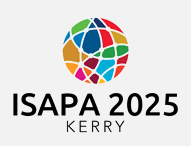Start Date
19-6-2025 10:30 AM
End Date
19-6-2025 12:00 PM
Abstract
Introduction There’s a critical need for adapted physical activity (APA) faculty to train teachers to support students with disabilities (Haegele et al., 2020). Little is known about the socialization of APA faculty (Richards & Wilson, 2020). Grounded in Occupational Socialization Theory (Wilson & Richards, 2020), we investigated the role of an inter-university APA collaborative in the socialization of doctoral students in alignment with the “creating new opportunities to thrive” strand through APA capacity building in higher education.
Methodology Twenty-eight doctoral students participated in semi-structured interviews, collaborative meetings, and critical incident discussions in this longitudinal qualitative study.
Results Through qualitative analysis, we constructed three themes: a) “It’s given me a network and a pool of people I can connect with”: The collaborative promotes collaboration and mentoring across institutions. For most, the collaborative created a network that fostered scholarly conversation, made faculty approachable, and reduced anxiety from imposter syndrome. Not all scholars felt it lived up to its potential while noting instances of social comparison; b) “Well the option’s here now, it’s meant to be”: The collaborative provided unique opportunities and helped mitigate challenges due to the COVID-19 pandemic. Funding through the collaborative made entry into doctoral programs more feasible; and c) “The meetings have continued to improve as they’ve refined them”: Mentors were responsive to feedback and modified collaborative activities according to scholar needs.
Conclusions Federally funded opportunities like this inter-university APA collaborative appear to be an important socializing influence for students and a means to building capacity in APA.
Recommended Citation
Warner, Paul H.; Malinowski, Paul R.; Richards, Kevin A.; Rifenburg, Peter; and Wilson, Wesley J., "The Influence of an Inter-University Collaborative on the Socialization of Adapted Physical Activity Doctoral Students" (2025). International Symposium of Adapted Physical Activity and International Symposium on Physical Activity and Visual Impairment and Deafblindness. 26.
https://sword.cit.ie/isapa/2025/day4/26
The Influence of an Inter-University Collaborative on the Socialization of Adapted Physical Activity Doctoral Students
Introduction There’s a critical need for adapted physical activity (APA) faculty to train teachers to support students with disabilities (Haegele et al., 2020). Little is known about the socialization of APA faculty (Richards & Wilson, 2020). Grounded in Occupational Socialization Theory (Wilson & Richards, 2020), we investigated the role of an inter-university APA collaborative in the socialization of doctoral students in alignment with the “creating new opportunities to thrive” strand through APA capacity building in higher education.
Methodology Twenty-eight doctoral students participated in semi-structured interviews, collaborative meetings, and critical incident discussions in this longitudinal qualitative study.
Results Through qualitative analysis, we constructed three themes: a) “It’s given me a network and a pool of people I can connect with”: The collaborative promotes collaboration and mentoring across institutions. For most, the collaborative created a network that fostered scholarly conversation, made faculty approachable, and reduced anxiety from imposter syndrome. Not all scholars felt it lived up to its potential while noting instances of social comparison; b) “Well the option’s here now, it’s meant to be”: The collaborative provided unique opportunities and helped mitigate challenges due to the COVID-19 pandemic. Funding through the collaborative made entry into doctoral programs more feasible; and c) “The meetings have continued to improve as they’ve refined them”: Mentors were responsive to feedback and modified collaborative activities according to scholar needs.
Conclusions Federally funded opportunities like this inter-university APA collaborative appear to be an important socializing influence for students and a means to building capacity in APA.

